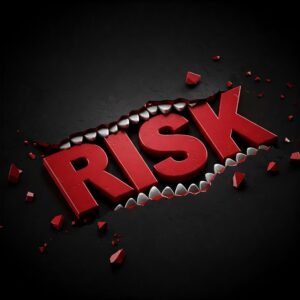In the world of compliance, few terms are as significant yet misunderstood as Politically Exposed Persons (PEPs). Identifying and managing PEP-related risks is a crucial part of due diligence processes, especially in industries like finance, real estate, and corporate governance. This guide will help you understand who PEPs are, why they matter, and how to effectively manage the associated risks.
Who Are Politically Exposed Persons (PEPs)?
A Politically Exposed Person is someone who holds, or has held, a prominent public position that makes them more susceptible to risks like bribery, corruption, or money laundering. PEPs can include:
- Heads of state, government officials, and high-ranking military officers
- Members of parliament or legislative bodies
- Judges and senior judicial officials
- Executives of state-owned enterprises
- Family members or close associates of these individuals
PEP status is not necessarily an indication of wrongdoing, but it signals a higher risk profile due to their influence and access to resources.
Why Do PEPs Matter in Compliance?
1. Increased Risk Exposure:
PEPs often have access to public funds and policymaking, making them targets for corruption or illicit activities.
2. Regulatory Requirements:
Many jurisdictions mandate enhanced due diligence (EDD) for PEPs under anti-money laundering (AML) and counter-terrorism financing (CTF) regulations. Non-compliance can result in hefty fines and reputational damage.
3. Reputational Impact:
Engaging with a PEP linked to corruption or financial crime can harm an organization’s credibility and stakeholder trust.
Types of PEPs
PEPs are typically categorized based on their roles and proximity to public power:
- Domestic PEPs: Individuals holding prominent positions in their home country.
- Foreign PEPs: Individuals with similar roles in foreign governments or organizations.
- International PEPs: Those connected to international organizations like the United Nations or World Bank.
- Close Associates and Family Members: Spouses, children, business partners, and others linked to PEPs.
How to Identify PEPs
1. Conduct Comprehensive Background Checks:
Leverage global databases and lists that identify PEPs and their associates.
2. Use Technology:
AI-powered tools with Natural Language Processing (NLP) can scan news, public records, and databases to identify PEP connections and risks in real time.
3. Ask Directly:
During customer onboarding, include questions about political affiliations or connections as part of your Know Your Customer (KYC) process.
Managing Risks Associated with PEPs
1. Apply Enhanced Due Diligence (EDD):
- Verify the source of funds and wealth.
- Scrutinize transactions for anomalies or high-risk patterns.
2. Monitor Continuously:
- Regularly update PEP status and monitor for changes in their risk profile.
- Use real-time monitoring tools to stay ahead of emerging risks.
3. Establish a Risk-Based Approach:
- Not all PEPs pose the same level of risk. Tailor your due diligence efforts based on their role, influence, and geography.
4. Maintain Clear Documentation:
- Record all steps taken to identify and mitigate PEP-related risks. This is critical for demonstrating compliance during audits or investigations.
Common Challenges in Managing PEP Risks
- False Positives: Automated systems can flag individuals incorrectly, leading to wasted resources.
- Data Gaps: Incomplete or outdated information can hinder accurate risk assessment.
- Evolving Regulations: Staying compliant with varying global standards can be challenging for multinational organizations.
How AI Simplifies PEP Risk Management
AI-powered compliance tools address many of these challenges by:
- Reducing False Positives: Machine learning algorithms refine results for higher accuracy.
- Providing Global Coverage: Accessing and analyzing data from multiple languages and jurisdictions.
- Ensuring Scalability: Handling increasing volumes of data as regulations and risks evolve.
Conclusion
Managing PEP-related risks is a cornerstone of modern compliance efforts. By understanding who PEPs are, why they matter, and leveraging advanced tools and strategies, organizations can effectively mitigate these risks while staying compliant with global regulations.







